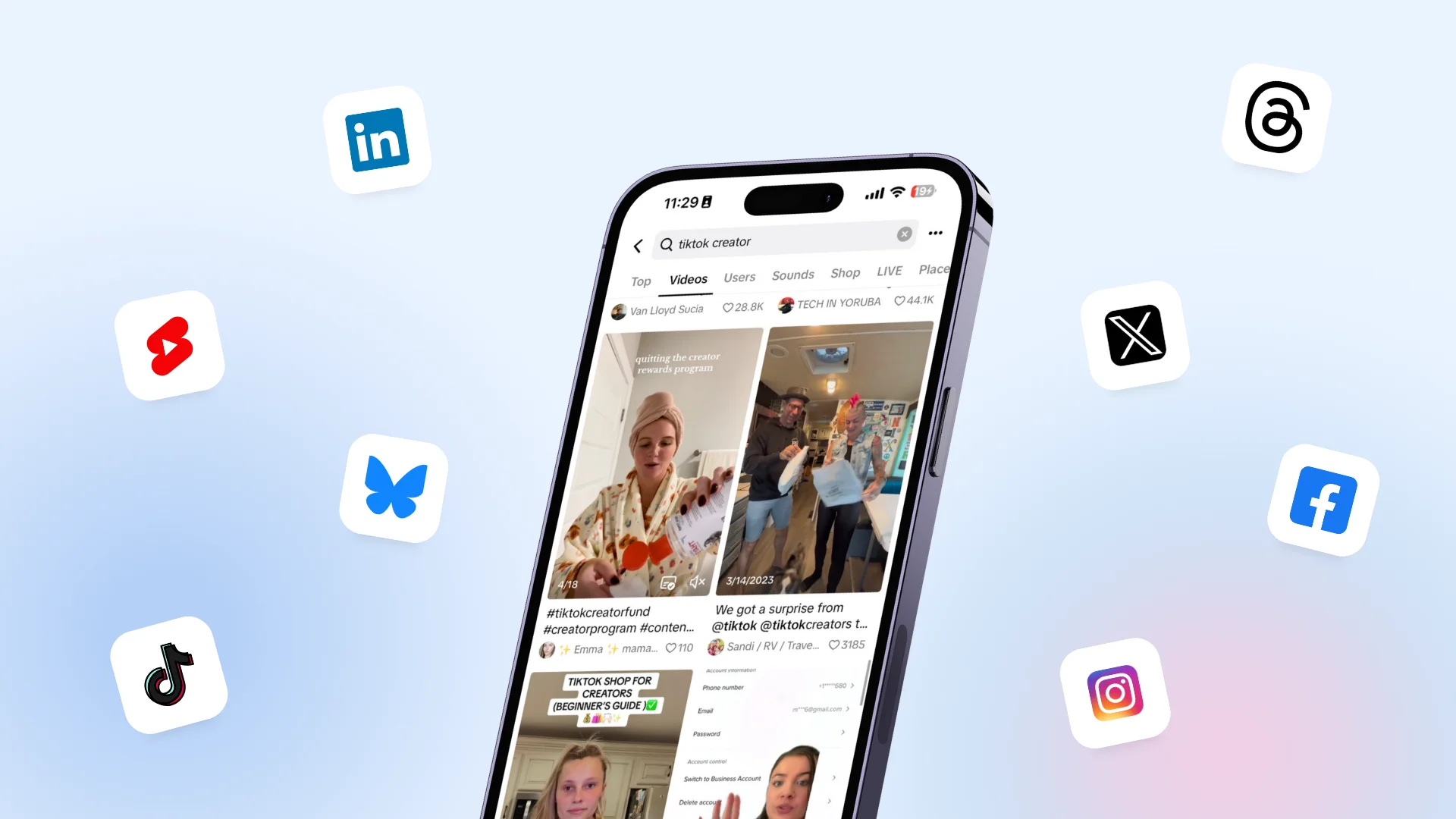New

Turn Your DMs Into Lead Gen!
Learn how to collect lead data from your DMs such as email addresses, phone numbers, and more right from your social inbox. If you are not yet automating your DMs your competitors are outpacing you.

How Something Social Saved 75% of Their Time and Increased Revenue by 15%
See how a fast-growing agency improved operations, cut down hours of manual work, and unlocked new revenue opportunities with Vista Social.
New

50 Unique Social Media Ideas for Consistent Content Creation
Discover 50 unique social media post ideas to engage your audience, grow your brand, and maintain a consistent content strategy with ease!

Mastering Content Reuse: The Key to a Consistent and Sustainable Posting Strategy
Demand generation
Customers are the lifeblood of all business.
Without dedicated people willing to purchase and recommend your products and services, your organization has no resources to grow. Unfortunately, acquiring and maintaining consumers can be challenging.
Demand generation is one of the most critical elements of the customer acquisition process. This multi-step process shows your prospects that you understand the problems they’re facing and that you offer a trustworthy solution.
What is demand generation?
The term “demand generation” refers to any activity engaged in by a company to get consumers excited about a service or product. Demand generation programs promote new products, expand your reach into new markets, build word-of-mouth buzz and can even generate PR.
While demand generation is all about building engagement and excitement, it is important to note that it’s not just an early-funnel marketing strategy. Demand generation programs apply to touchpoints throughout the entire sales and conversion cycle. The objective is to build and nurture crucial customer relationships over the long-term.
Although the specific tactics used in a demand generation strategy will vary according to the nature of your brand, strategies may include:
- eBook campaigns
- Weekly newsletters
- Inbound and website marketing
- Content marketing and curation
- Social media marketing
- Paid advertising (PPC)
- Free tools and reports
- Video marketing
- Influencer marketing
Demand generation vs. lead generation
It’s easy to accidentally place “demand generation” and “lead generation” in the same category. However, they are different concepts.
Lead generation focuses on convincing your prospects to provide you with valuable contact information. You might use a high-quality piece of content placed behind a gated form that collects email addresses and phone numbers to boost lead numbers.
Demand generation, on the other hand, is about educating your customers by showing them that they already have a challenge in their life that you can fix. With demand generation, you take a proactive approach to getting in front of your audience and showing people what solutions you can provide.
Demand generation and data
Demand generation relies on your ability to understand consumer needs and respond to them. As such, for demand generation to work successfully, you’ll need plenty of data in your strategy. As well as selecting the marketing channels and themes most likely to speak to your audience, you’ll also need to determine what kind of words and content have the best impact.
Ensure that your marketing team has a strategy for personalizing content according to your customer’s needs. Continuous testing, analysis and data collection will be crucial to this process. As you begin to notice trends in your marketing programs, you’ll be able to connect marketing activities to critical metrics for success.
Try Vista Social for Free
A social media management platform that actually helps you grow with easy-to-use content planning, scheduling, engagement and analytics tools.
Get Started NowTools like Vista Social help with determining what kind of content your customers appreciate most, which social channels you should connect with them on and more. With Vista Social, it’s even possible to automate social posts to add more consistency to your campaigns.
Crucial components of a demand generation strategy
Demand generation campaigns require a careful strategy to improve the impact of your content. To transform your customers from “awareness” to “conversion” in their sales journey:
- Create a product need: Educate your customers on the problem that your product or service solves. Your audience may not know that they have this problem before you show them.
- Increase brand awareness: Improve the perception of your brand by ensuring that you’re consistently in front of the right audience on the correct social and digital channels.
- Demonstrate your value: Once your audience has a better idea of the challenge they face and what your brand can do, create content that conveys the benefits of choosing to work with your organization. For example, eBooks and webinars that examine the value of your product or service are often valuable.

stronger relationships on social
Vista Social helps you understand and reach your audience, engage your community and measure performance with the only all-in-one social media management with easy-to-use features like publishing, engagement, reviews, reports and listening.